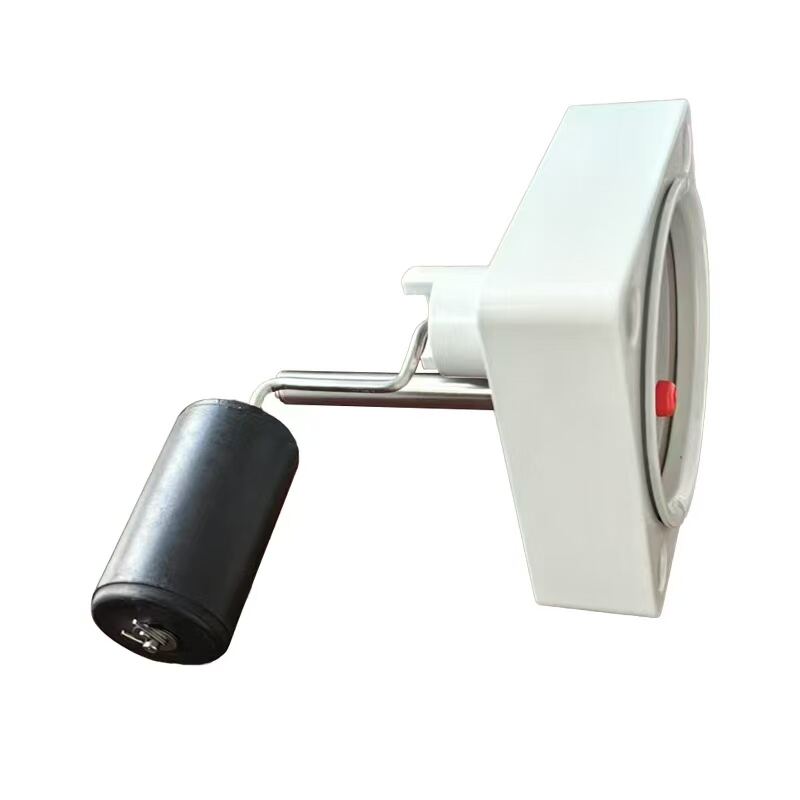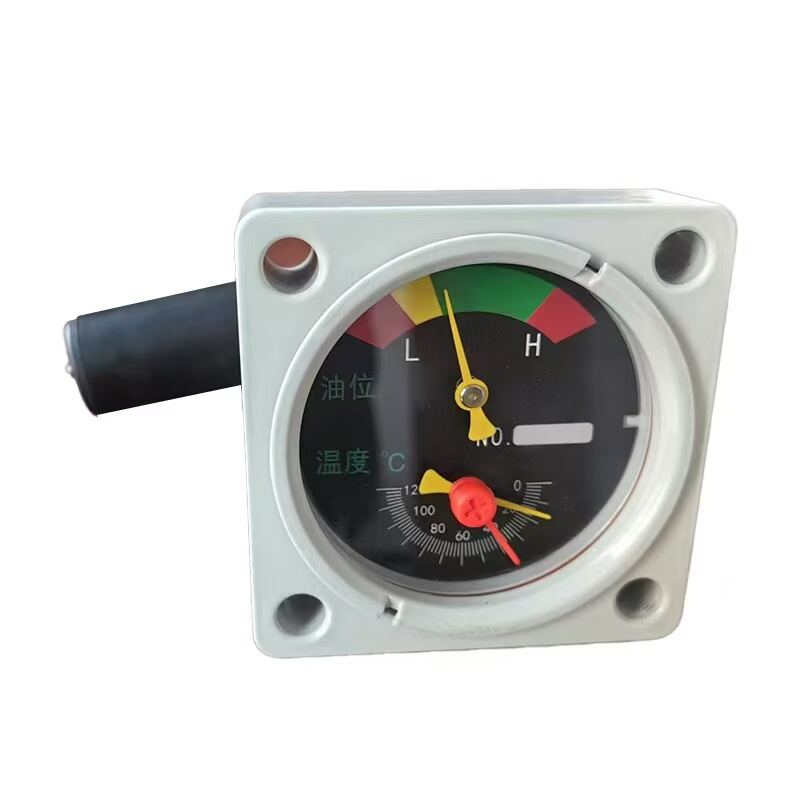Understanding the Critical Role of Oil Level Monitoring in Equipment Performance
In the world of industrial machinery and equipment maintenance, an oil level gauge serves as a vital instrument that helps prevent costly breakdowns and ensures optimal performance. These precision instruments provide real-time monitoring of oil levels, enabling operators and maintenance teams to maintain proper lubrication and protect valuable machinery investments. The significance of accurate oil level measurement cannot be overstated, as it directly impacts equipment longevity, operational efficiency, and workplace safety.
From manufacturing plants to power generation facilities, oil level gauges play an essential role in maintaining the health of various mechanical systems. These devices provide a clear visual indication of oil levels, helping technicians and operators make informed decisions about maintenance schedules and oil replacement intervals. Without proper oil level monitoring, equipment can suffer from inadequate lubrication, leading to increased friction, wear, and potential system failure.
Components and Types of Oil Level Gauges
Traditional Sight Glass Indicators
The most common type of oil level gauge is the sight glass indicator, which consists of a transparent tube or window that allows direct visual observation of the oil level. These gauges are typically constructed from durable materials such as borosilicate glass or high-grade plastic, designed to withstand high temperatures and pressure variations. The simplicity and reliability of sight glass indicators make them a popular choice across various industries.
Modern sight glass indicators often incorporate additional features such as protective shields, temperature indicators, and high-visibility markings to enhance their functionality and ease of use. These improvements help maintenance personnel quickly identify when oil levels fall below acceptable ranges, enabling proactive maintenance before equipment damage occurs.
Electronic Level Sensors
Advanced electronic oil level gauges represent the cutting edge of monitoring technology. These sophisticated devices use various sensing methods, including ultrasonic, capacitive, or magnetic float sensors, to provide precise oil level measurements. The data from these sensors can be integrated into digital monitoring systems, allowing for remote monitoring and automated alerts when oil levels require attention.
Electronic sensors offer several advantages over traditional sight glasses, including the ability to log historical data, set customizable alarms, and integrate with broader equipment management systems. This enhanced functionality makes them particularly valuable in large-scale industrial operations where continuous monitoring is essential.
Installation and Maintenance Best Practices
Proper Mounting and Positioning
The effectiveness of an oil level gauge depends significantly on its installation. Proper mounting ensures accurate readings and reliable performance throughout the device's operational life. The gauge must be installed at the correct height and angle, with appropriate consideration for vibration isolation and environmental protection. Careful attention to mounting specifications helps prevent false readings and premature gauge failure.
When installing an oil level gauge, technicians must also consider factors such as accessibility for regular inspection, protection from physical damage, and compatibility with the surrounding equipment. These considerations help maximize the gauge's utility while minimizing the risk of damage or malfunction.
Regular Inspection and Cleaning Protocols
Maintaining the accuracy and reliability of oil level gauges requires regular inspection and cleaning. Over time, oil residue and debris can accumulate on sight glasses, making it difficult to obtain accurate readings. Establishing a routine maintenance schedule helps ensure continued gauge accuracy and extends the service life of both the gauge and the equipment it monitors.
Cleaning procedures should follow manufacturer recommendations and industry best practices to avoid damage to sensitive components. Regular calibration of electronic sensors and verification of sight glass accuracy helps maintain measurement precision and system reliability.

Maximizing Equipment Protection Through Monitoring
Early Warning System Benefits
An oil level gauge serves as an early warning system for potential equipment problems. By monitoring oil levels consistently, maintenance teams can identify trends that might indicate excessive consumption, leaks, or other mechanical issues before they lead to catastrophic failure. This predictive capability helps organizations avoid unexpected downtime and reduce maintenance costs.
The data provided by oil level gauges also helps optimize maintenance schedules and resource allocation. By understanding typical oil consumption patterns, organizations can better plan for oil changes and other maintenance activities, improving operational efficiency and reducing waste.
Integration with Predictive Maintenance Programs
Modern industrial facilities increasingly incorporate oil level monitoring into comprehensive predictive maintenance programs. By combining oil level data with other monitoring parameters such as temperature, vibration, and pressure, maintenance teams can develop a more complete understanding of equipment health and performance trends.
This integrated approach enables more accurate failure prediction and helps optimize maintenance intervals. The result is improved equipment reliability, reduced maintenance costs, and enhanced operational efficiency across the entire facility.
Future Trends in Oil Level Monitoring
Smart Monitoring Technologies
The future of oil level monitoring is being shaped by advances in smart technology and the Internet of Things (IoT). New generations of oil level gauges incorporate wireless connectivity, cloud-based data storage, and advanced analytics capabilities. These features enable real-time monitoring and analysis of oil levels across entire equipment fleets, providing unprecedented visibility into equipment health and performance.
Artificial intelligence and machine learning algorithms are being developed to analyze oil level data alongside other equipment parameters, providing more accurate predictions of maintenance needs and potential failures. This evolution in monitoring technology promises to further enhance equipment reliability and maintenance efficiency.
Environmental Considerations
As environmental regulations become more stringent, oil level monitoring systems are evolving to help organizations minimize their environmental impact. Advanced gauges can help prevent oil leaks and spills by providing early detection of potential issues. Additionally, more precise monitoring enables organizations to optimize oil usage and reduce waste, contributing to sustainability goals.
The development of eco-friendly materials and more energy-efficient monitoring systems reflects the industry's commitment to environmental stewardship while maintaining high standards of equipment protection.
Frequently Asked Questions
How often should oil level gauges be inspected?
Oil level gauges should be inspected daily as part of routine equipment checks, with more thorough inspections conducted during scheduled maintenance intervals. The frequency may vary depending on the operating environment and equipment criticality, but regular visual checks are essential for maintaining equipment reliability.
What are the signs of a malfunctioning oil level gauge?
Common signs include unclear or distorted level readings, visible damage to the sight glass, inconsistent measurements between checks, and unusual oil consumption patterns. Any signs of oil leakage around the gauge mounting points or persistent fogging of the sight glass should be addressed immediately.
Can oil level gauges be retrofitted to existing equipment?
Yes, most equipment can be retrofitted with oil level gauges. The process requires careful consideration of mounting locations, connection types, and compatibility with the existing system. Professional installation is recommended to ensure proper function and prevent potential issues.

